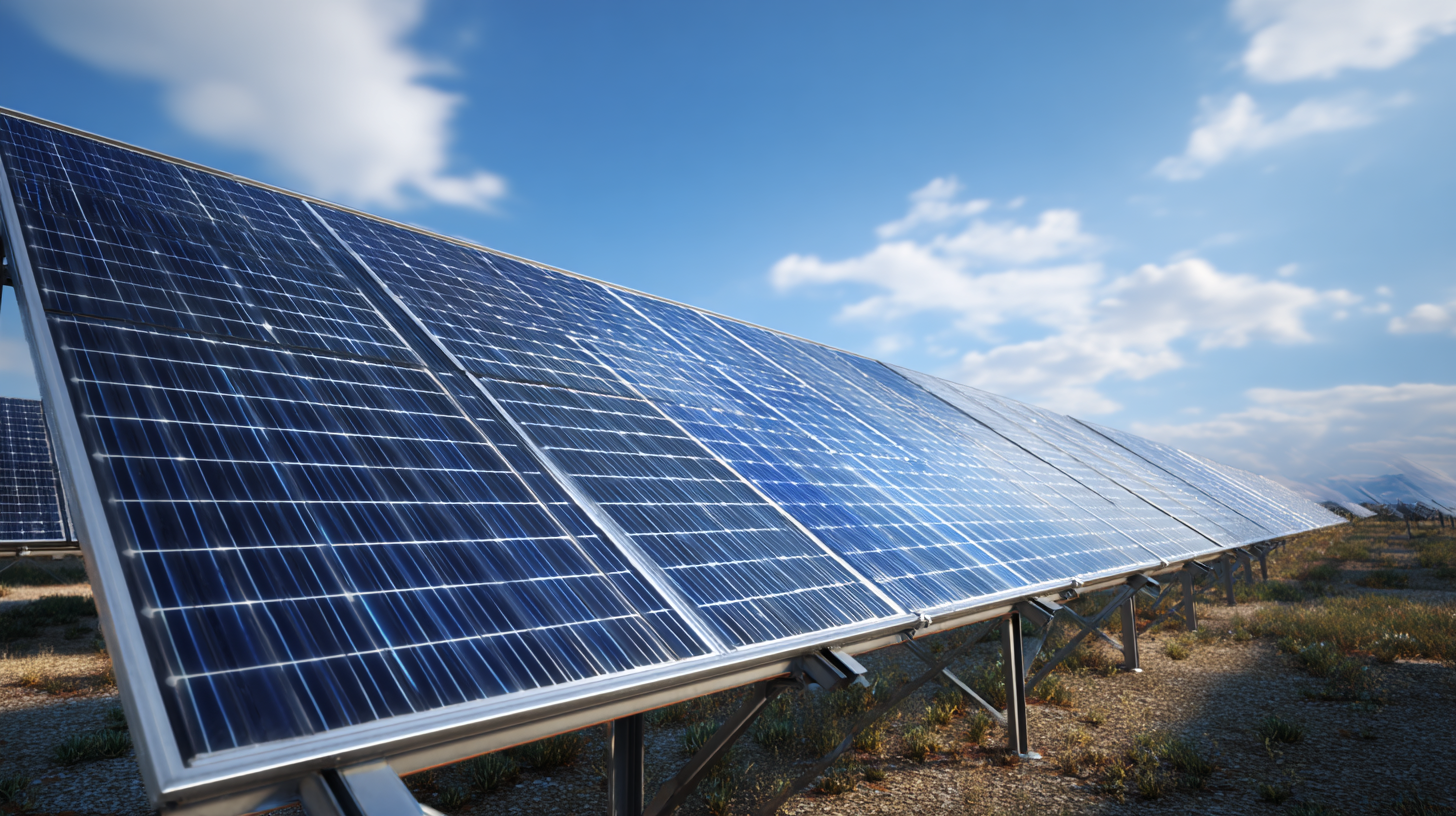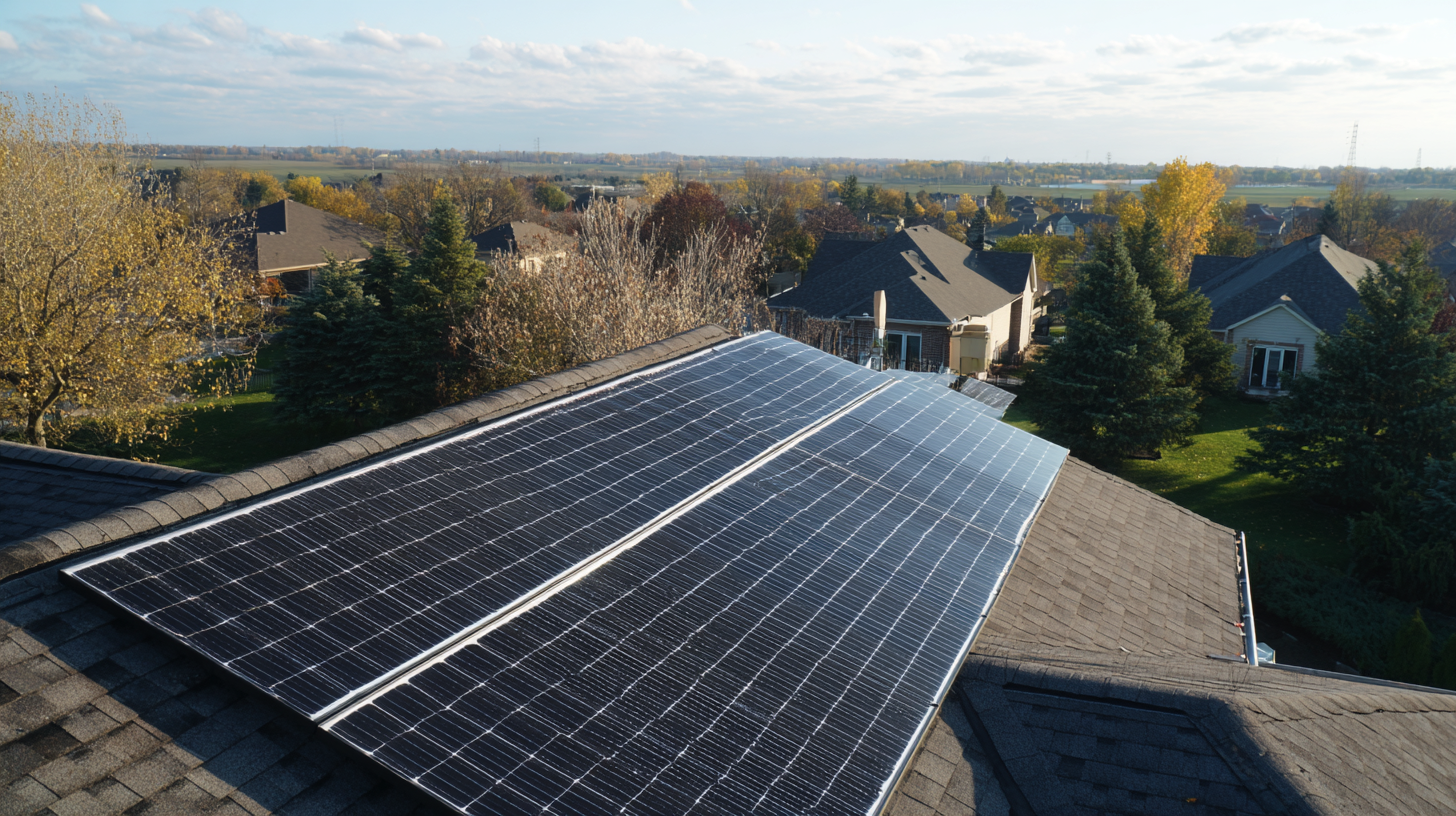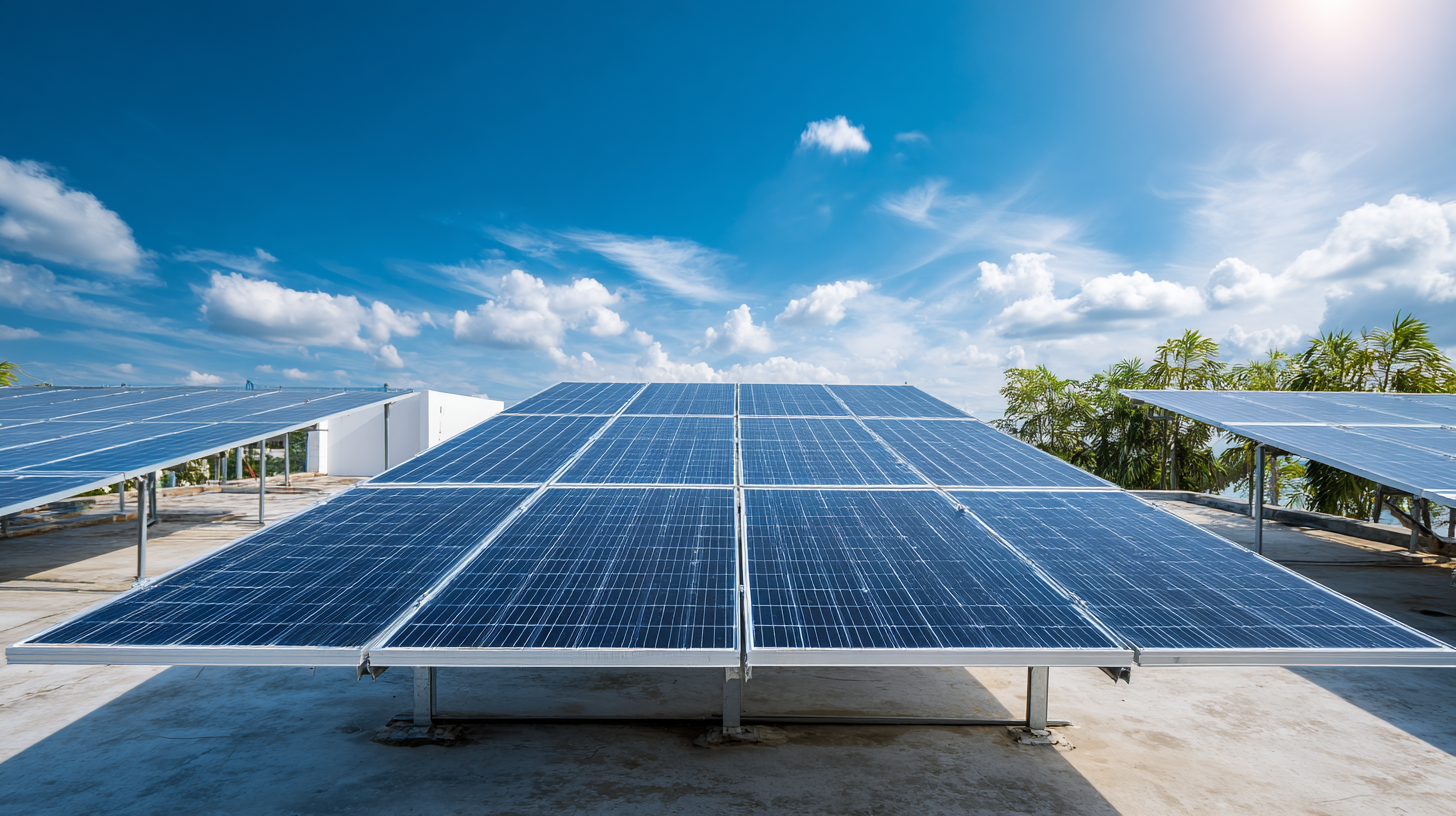Blog
- Home
- Blog
What is the Best Solar Panel for Your Home Energy Needs According to Industry Reports
As the global push towards renewable energy sources intensifies, selecting the right solar panel for your home has become more critical than ever. According to industry reports, the solar panel market is projected to reach a staggering $223 billion by 2025, reflecting an annual growth rate of approximately 20%. This growth is driven by advancements in solar technology, increased efficiency ratings, and government incentives encouraging homeowners to invest in sustainable energy. In the face of climate change challenges and rising energy costs, understanding the best solar panel options tailored to your energy needs is essential. This blog aims to explore the current market trends, highlight the top-performing solar panels available today, and provide insights into how these innovations can fulfill your home energy requirements while contributing to a cleaner, greener future.

Understanding Different Solar Panel Technologies for Home Use
When choosing the best solar panel for your home energy needs, understanding the diverse technologies available is essential. The two most common solar panel types are monocrystalline and polycrystalline. Monocrystalline panels, known for their high efficiency rates (around 15-22%), are made from single-crystal silicon and typically offer better performance in low-light conditions. Conversely, polycrystalline panels, while slightly less efficient (13-16%), are often more affordable and provide a good balance for homeowners seeking cost-effective options.
Another technology gaining traction is thin-film solar cells. These panels offer flexibility and lightweight designs, making them ideal for unconventional surfaces. However, their efficiency tends to be lower, usually between 10-12%, which means they may require more space to achieve the same energy output as traditional panels. Industry reports indicate that choosing the right solar panel type can depend on your specific energy needs, budget, and roof space.
**Tips for Selecting the Right Solar Panel:**
1. Assess your energy consumption to estimate the number of panels required.
2. Research local incentives and rebates, which can significantly reduce upfront costs.
3. Consider warranties and the lifespan of the panels; good warranties often signal higher quality and reliability.
What is the Best Solar Panel for Your Home Energy Needs According to Industry Reports
| Solar Panel Technology | Efficiency (%) | Cost per Watt ($) | Warranty (Years) | Lifespan (Years) |
|---|---|---|---|---|
| Monocrystalline | 15-22% | $2.50 | 25 | 25-30 |
| Polycrystalline | 13-16% | $1.80 | 25 | 25-30 |
| Thin-Film | 10-12% | $1.00 | 10-25 | 10-20 |
| Bifacial | 20-25% | $2.80 | 30 | 30-35 |
Comparing Monocrystalline, Polycrystalline, and Thin-Film Panels
When selecting the best solar panel for your home, understanding the differences between
monocrystalline,
polycrystalline, and
thin-film panels
is critical.
 Monocrystalline panels are known for their high efficiency and
space-saving design, often achieving efficiency rates above 20%. Industry reports indicate that they perform better in low-light conditions,
making them a popular choice for urban environments where roof space is limited.
Monocrystalline panels are known for their high efficiency and
space-saving design, often achieving efficiency rates above 20%. Industry reports indicate that they perform better in low-light conditions,
making them a popular choice for urban environments where roof space is limited.
Polycrystalline panels, while generally less expensive, provide slightly lower efficiency levels, ranging from 15% to 20%. They are an excellent option for homeowners on a budget, especially in areas with abundant sunlight. According to industry analysis, their performance can remain stable over time, making them a reliable choice for moderate energy needs.
Thin-film panels are the least efficient, typically averaging around 10% to 12%, but they are versatile and lightweight, allowing for unique installation opportunities. These panels often have better performance in high temperatures, which can be an advantage in warmer climates.
Tips: Evaluate your roof space, energy needs, and budget before making a decision. Consider the long-term efficiency and warranty support of each type, as these factors can greatly impact your investment. Don’t forget to check for local incentives and rebates that could affect the overall cost of installation.
Evaluating Efficiency and Performance Ratings of Solar Panels
When considering the best solar panel for your home energy needs, it's essential to evaluate the efficiency and performance ratings that define each option. According to the National Renewable Energy Laboratory (NREL), the efficiency of solar panels can range from about 15% to over 22%. Panels at the higher end of this range, like those from SunPower and LG, utilize advanced technology that maximizes energy absorption, resulting in superior performance even in less-than-ideal weather conditions. With a reported degradation rate of only 0.2% per year, premium panels can deliver reliable energy generation for decades.
Industry reports indicate that monocrystalline solar panels, for instance, typically outperform their polycrystalline counterparts due to their premium silicon composition. A report by Wood Mackenzie states that while polycrystalline panels operate at efficiency rates around 15-17%, monocrystalline panels can achieve efficiencies of 18-22%, making them a more attractive option for homeowners looking to maximize their investment. Additionally, performance ratings such as the PTC (Photovoltaic Technical Committee) rating provide insight into how panels will perform under real-world conditions, allowing consumers to make informed decisions based on expected energy output.
Cost Analysis: Initial Investment vs Long-Term Savings
When considering solar panels for your home, it’s crucial to weigh the initial investment against long-term savings. According to a recent report by the Solar Energy Industries Association (SEIA), the average cost of solar panel installation in the U.S. has dropped by about 70% since 2010, resulting in a typical initial investment of around $15,000 to $25,000 before incentives. However, these upfront costs can be mitigated significantly through federal tax credits and local rebates, which can cover up to 26% of the installation costs in 2021.
On the flip side, the long-term savings potential of solar panels is compelling. A study by Lawrence Berkeley National Laboratory found that homeowners with solar panels saw an average increase in home value of approximately $15,000. Moreover, the National Renewable Energy Laboratory estimates that solar energy systems can save homeowners an average of $30,000 over 20 years on energy costs. These figures highlight that while the initial investment may seem daunting, the substantial long-term savings and potential increase in property value make solar panels an attractive option for many homeowners, advocating for a calculated approach to energy management.

Government Incentives and Rebates for Solar Panel Installation
When considering the installation of solar panels, government incentives and rebates play a crucial role in making solar energy more accessible and affordable for homeowners. Many federal and state programs offer financial incentives to encourage the adoption of renewable energy sources. For instance, the Federal Investment Tax Credit (ITC) allows homeowners to deduct a significant percentage of their solar installation costs from their federal taxes. This incentive has been pivotal in promoting solar panel adoption across the country.
In addition to federal incentives, several states provide unique rebates and incentives to local residents. These may include cash rebates, performance-based incentives, or even property tax exemptions for solar installations. Some states have also implemented net metering policies, allowing homeowners to sell excess energy generated back to the grid, further enhancing financial savings. To maximize benefits, it's essential for homeowners to research available incentives in their region, as these programs can significantly reduce the overall cost of solar panel systems and improve the return on investment.